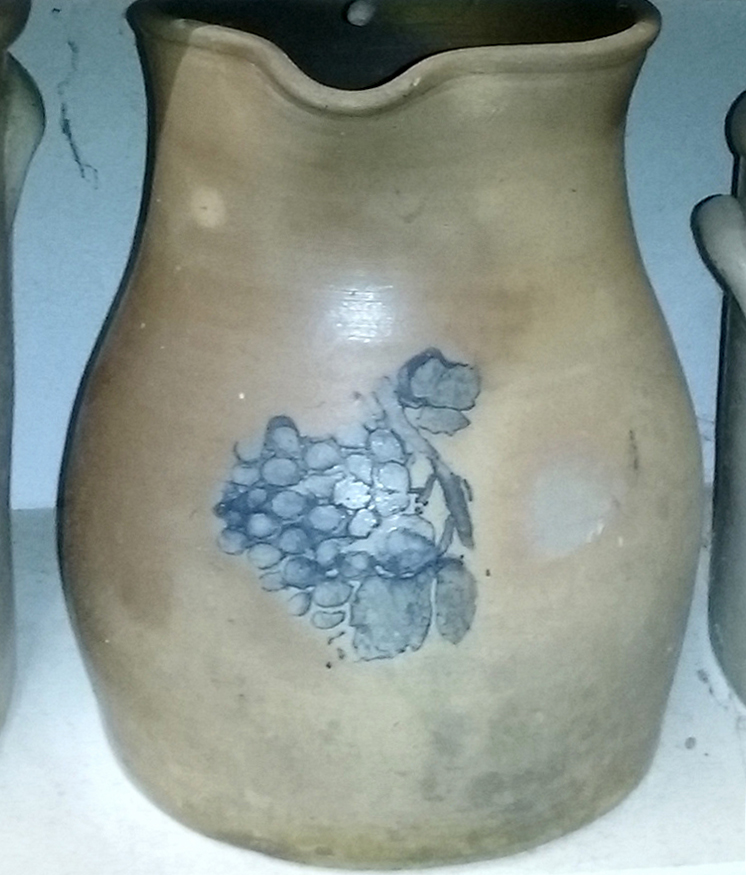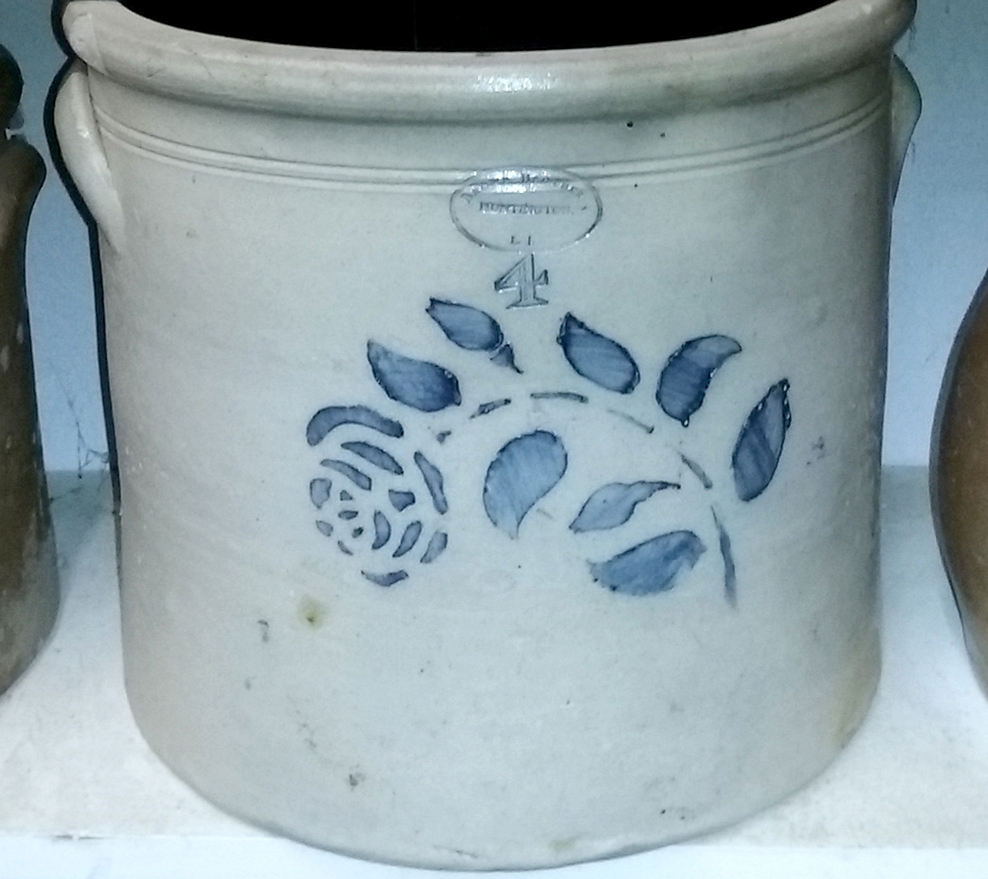Guest Blogger: Mark J. Smith
In the period of time before the mass manufacture of glass and cans in the 20th century, stoneware was essential in the home and on the farm. As utilitarian as they were, potters did not shy away from making their hand-turned jugs and pots more unique and beautiful with the application of slip, the “paint” the potters used that would, in the heat of the kiln, transform into a deep cobalt blue.
The Brown Brothers created their own designs using traditional methods of brushing slip decorations on the pot or, less often, pouring thin streams from a slip cup. For a short time, they experimented with stencils.
Many thanks to Mark Smith for his expertise.
Stencils in the Era of the Brown Brothers (1863-1904)
By Mark R. Smith
(Copyright Mark R. Smith 2019)
Stenciling was used briefly by the Browns in the 1870’s, perhaps for a year or so. It did not catch on, and the Pottery quickly returned to its traditional brushed decorations.
Pottery manufacturers, who had relied on their team of potters, or in the case of large operations, a skilled decorator or artist to brush or slip trail the cobalt blue glaze in a desired pattern, discovered that applying the blue slip with a stencil created a more uniform and identifiable decoration. This would allow less skilled labor to apply the decorations.
The use of stencils in the decoration of stoneware, already common in Western Pennsylvania and south into West Virginia, was not unheard of in the North East, although it was far less common in this region. Subject, size and form of stenciled decorations were unique to each Pottery operation. The eagle stencils used were unique to each Pottery. Along with eagles, Huntington used images of cows, roses and grapes on their stoneware.
Brass or Copper was perhaps the material of choice for creating stenciled artwork on stoneware. Both are easily cut and shaped. They were flexible enough to fit the curve of the pottery, and durable enough to stand up to the wet slip and brushwork used to apply the decoration. However, one should not rule out the use of a paper stencil, such as waxed paper. This too would be easily worked, conforming to the round shape of the pottery, and would hold up to the moisture of the slip.
Collectors know of six stenciled decorations applied to Huntington pottery. Five stencils depict an eagle (not pictured), a cluster of grapes, a cow, an ornate floral, and a simpler rose in profile.



(Collection Mark R. Smith)

And the sixth stencil?
At first glance, Huntington’s stenciled profile roses appear to be identical. But closer inspection reveals an interesting difference: there are two very different sizes. The maker of the rose stencil enlarged or reduced the pattern before cutting it from the plate, possibly producing the copy by shining a light through the original. The larger profile rose is Huntington’s sixth stencil.

Of the stencils employed by the Brown Brothers, the eagle is by far the most common. There could well be more eagles around today than all the other stencils combined. The smaller profile rose is scarce but does turn up from time to time. Grapes, like the rose, are rarely seen. To date, known examples of the all the other stencils are likely in the single digits, with some represented by less than 5 examples.
Stenciling at the Brown Brothers Pottery was short lived, but a close examination gives us valuable insight into of the art and business of the Pottery.
Very nice Karen, thank you!
LikeLike